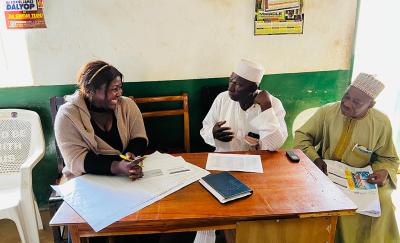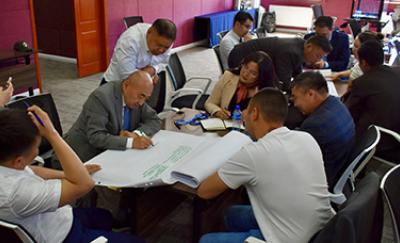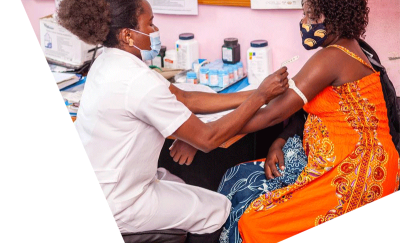Managing Risks and Uncovering Opportunities: Toward Consistent Climate Preparedness


Climate change is accelerating, making business as usual no longer usual— or adequate—for any human endeavor in the near future. The Biden Administration has moved climate change preparedness and risk management to the front burner with this month’s rollout of Climate Adaptation and Resilience Plans for 20 U.S. agencies, including FEMA, USAID, and the U.S. Army Corps of Engineers. Successfully executing these plans—in the U.S. and overseas—will require overcoming considerable hurdles, from spotty internal capacity to data gaps to ensuring equity for those most vulnerable.
The concept of climate preparedness isn’t overly complex, or even new, as this World Bank roundup of tools shows. USAID has had an official climate risk management (CRM) policy since 2015 to ensure its projects in any sector anticipate and plan for climate change impacts. Other U.S. agencies have experimented with ways to improve resiliency and adapt to impacts from climate change. But climate preparedness approaches aren’t systematically applied or flexibly coordinated; a reactive mode still prevails as disasters multiply. Optimal climate readiness would generate proactive, creative solutions to climate risks across the globe that are transformative, quantifiable, and forward-looking.
For government agencies, civil society, and commercial entities to sufficiently and consistently prepare for climate variability, they must boost internal capacity, get the right information about the climate risks they face, evaluate costs, and identify benefits and co-benefits of climate-oriented investments. Just as important is applying an equity lens to ensure that those who are frequently marginalized—women, children, the elderly, disabled, and indigenous—can share equally in a more resilient world.
These approaches would advance climate preparedness across the board:
Improving information. To determine climate risk and benefits, we need the right data during conceptualization and design to minimize the effort and cost of obtaining crucial information. As information may be generated by multiple parties, it’s essential to improve collaboration among researchers, government agencies, stakeholders, and private entities. NOAA recently took a step in this direction by announcing upgrades to its website to make it easier for governments, communities, and businesses to access data to help them evaluate and adapt to climate risks.
After Hurricane Sandy, Abt conducted geospatial modeling for the U.S. National Fish and Wildlife Foundation using hydrologic and hydraulic data generated by restoration grant applicants. Abt determined the physical area of restoration activities along the Eastern Seaboard, measured their socio-economic impacts, and determined how people, buildings, and infrastructure would weather future flooding, A lesson learned from this project was to obtain all generated hydrologic and hydraulic modeling results as part of the grant application process to best assess project effectiveness.
In many developing countries, a lack of downscaled, localized climate data can hamper this kind of analysis. Further investments in climate modeling and downscaling to allow global coverage at finer levels would be valuable. Meanwhile, information sharing helps fill in gaps for reasonable projections: For USAID, Abt used already published, downscaled climate data to develop estimates of how often coastal storms would hit a major city in Mozambique as part of an infrastructure analysis.


Quantifying benefits. Most current evaluation techniques favor near-term benefits over long-term functionality, and fail to capture benefits to health, livelihoods, and community resilience. With a broader perspective, practitioners and decision-makers can consider not only climate risks to projects and programs but benefits and co-benefits for multiple stakeholders.
Abt is making this process easier with simple customizable templates that enable clients like EPA, USAID, and OSHA to quickly calculate the costs and benefits of proposed climate solutions and monetize health benefits of state and local climate action plans across the U.S. For USAID, we are producing case studies that show how diverse projects have integrated climate risk management to reap quantifiable and monetized benefits – from increased crop yields in Kosovo to conflict-free grazing in northern Uganda.
The more quantifiable and understandable the data, the better the chance of building consensus and creating urgency for informed decisions among a broad range of stakeholders.
Engaging inclusively. Women, youth, indigenous populations, and other marginalized groups suffer disproportionate impacts from climate shocks and stressors, so their viewpoints are essential in shaping risk responses. Broad, participatory, and inclusive engagement helps identify gaps and design more widely acceptable solutions.
For the Pueblo de San Ildefonso, a Native American Tribe in New Mexico, Abt engaged elders, youth, resource managers, and Tribal elected officials to develop a climate action plan that integrated traditional intergenerational knowledge of the Tribe with climate science to address climate-exacerbated risks of wildfire and drought. This plan pinpointed community priorities and actions to mitigate risk and sustain the Community Vision, including sacred sites and landscapes, traditional practices, and sovereign governance. For USAID, Abt convened broad groups of local stakeholders in Madagascar and Senegal to design National Adaptation Plans.
Identifying opportunities. USAID’s Climate Risk Profiles give decision makers for developing countries and regions a starting point for climate risk management. However, these profiles do not describe actions to avoid these risks. A parallel set of “Climate Opportunity Profiles” could provide this guidance. For example, paddy rice production at risk of drought could apply alternate wetting and drying (AWD) techniques, which improves water use efficiency, reduces methane emissions, and cuts energy use for irrigation. Health systems that anticipate and accommodate the needs of climate refugees would reduce emergency room visits that strain local budgets while stemming potential disease outbreaks that threaten wider populations.
Applying a climate preparedness lens enables us to identify co-benefits that offer tandem opportunities for mitigating climate risks and improving lives and livelihoods. Moving from a reactive response to systemic climate preparedness will make it possible to thrive in an increasingly unpredictable environment.
Read More

Pathways to UHC: Nigeria’s State and Local Approaches to Financing Integrated HIV Services and Primary Health Care
Nigeria’s state and local government-driven approaches to integrated primary health care are transforming financial protection and access for vulnerable populations, setting a replicable model for sustainable universal health coverage.

Engaging Men in Gender-Based Violence Prevention
To observe the 16 Days of Activism Against GBV, Abt is convening a webinar on engaging men in GBV prevention.

The Next Phase of Financing for Resilience
In our webinar, explore innovative financial strategies to enhance climate resilience and scale finance for sustainable development in emerging markets.

Global Digital Health Forum (GDHF) 2024
Abt Global is sponsoring and presenting at the Global Digital Health Forum (GDHF) 2024.

